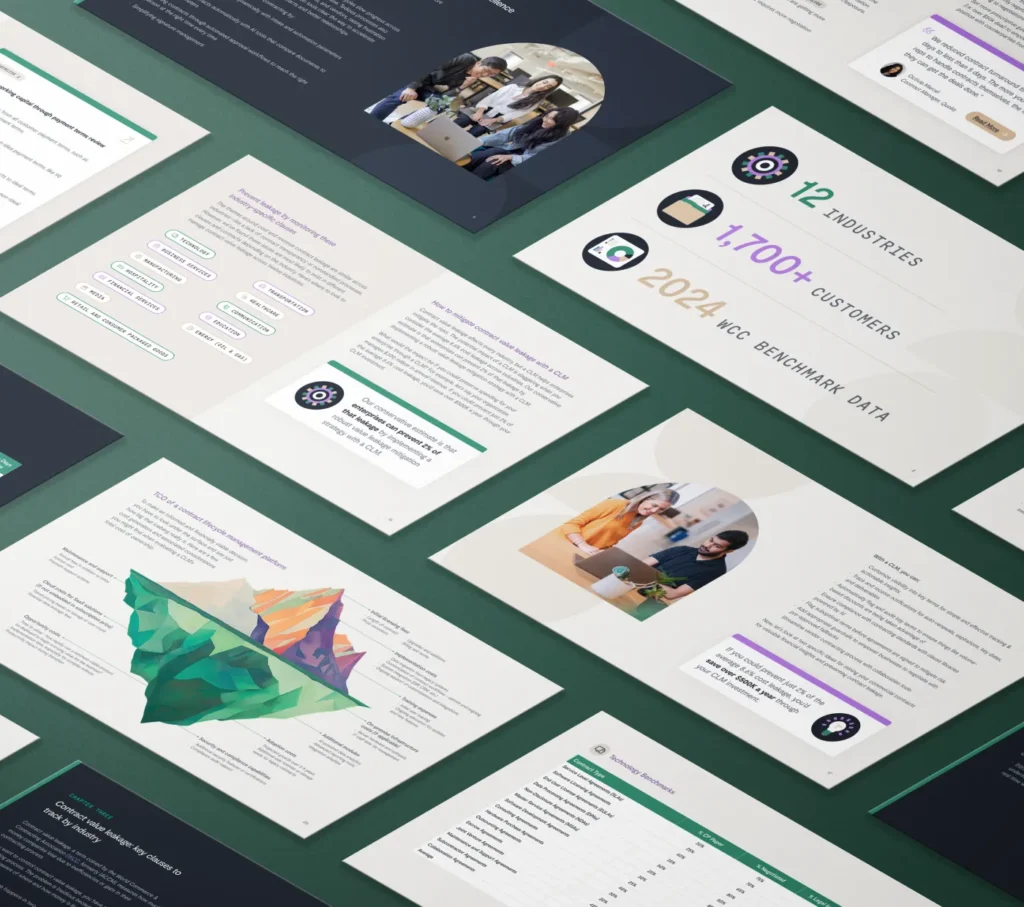What We’ve Analyzed
industries
+
Ironclad customers
WCC benchmark metrics
Drive org-wide impact
In this report, you’ll see where your organization stacks up and learn proven strategies for improving operations, mitigating risk, and surfacing opportunities for revenue recognition from your contracts.

Power dynamics are shifting in favor of business partners
Counterparty (CP) paper can result in a higher risk of unfavorable terms and longer cycle times. Learn strategies to successfully push your own paper, from working with sales to keeping your templates counterparty-friendly.

Valuable legal expertise is being spent on routine contract review
Legal teams provide the most value when using their expertise to work through complex legal scenarios. Get tips for reducing legal involvement in low-complexity contracts, from setting hard negotiation floors to educating business users.

Keeping an eye on cycle times is critical to improving operations
Measuring contracting speed from creation to signing lets you track performance over time and stop concerning trends before problems swell. We’ll walk you through exactly what you can do to improve efficiency.

What’s inside the report?
- Introduction: Why Contracting Impact Measurement Matters
- Part 1: Contracting Value Realization: KPIs for Operational Excellence
- Part 2: Contracting Benchmarks by Industry & How to Use Them
- Part 3: Contract Value Leakage: Key Clauses to Track by Industry
- Part 4: Evaluating Total Cost of Ownership (TCO) & Driving Enterprise Adoption
- Part 5: How to Structure Your Business Value Case & Roadmap













